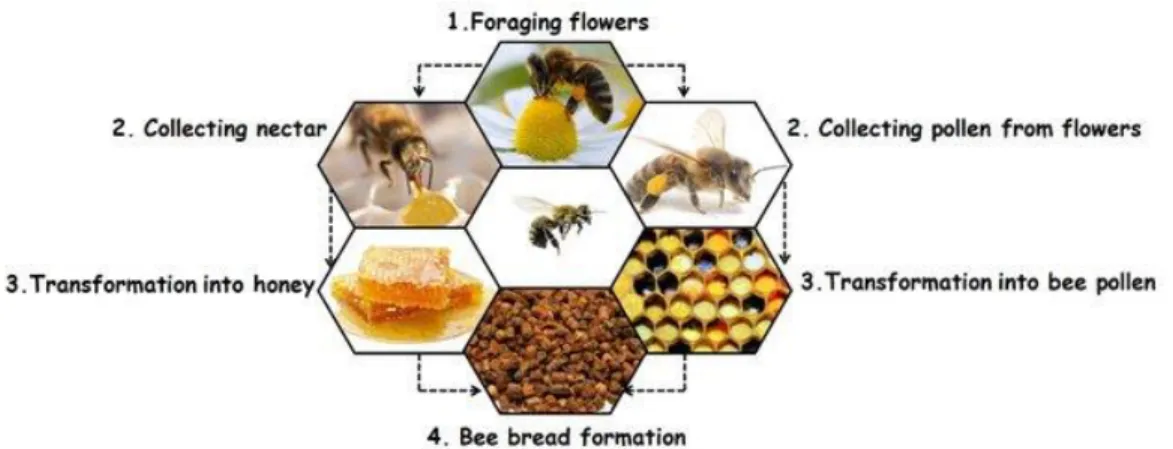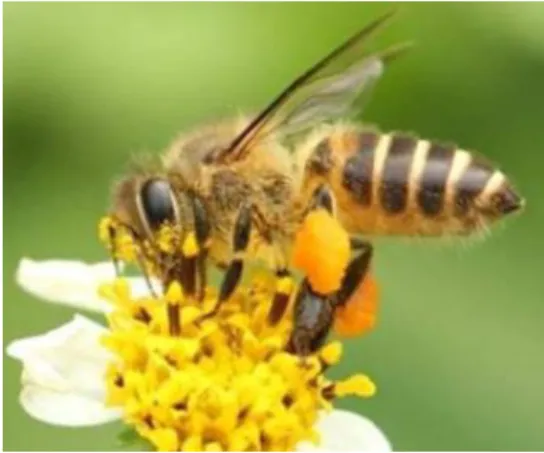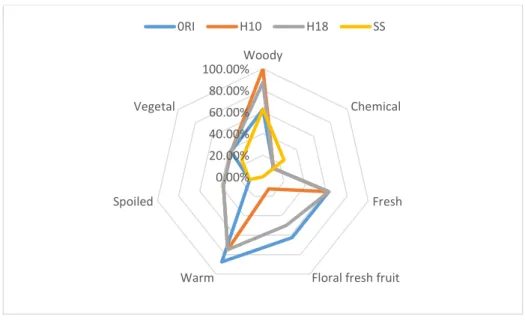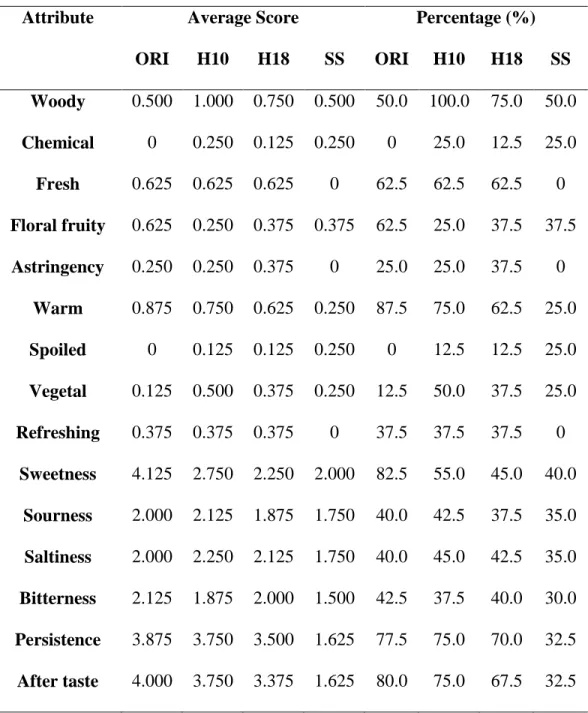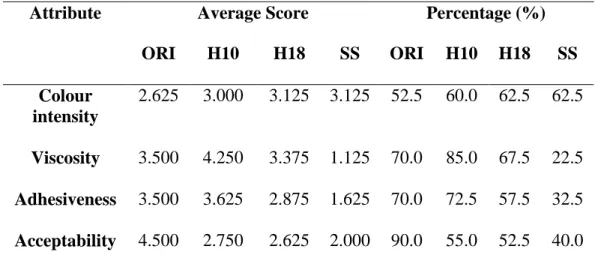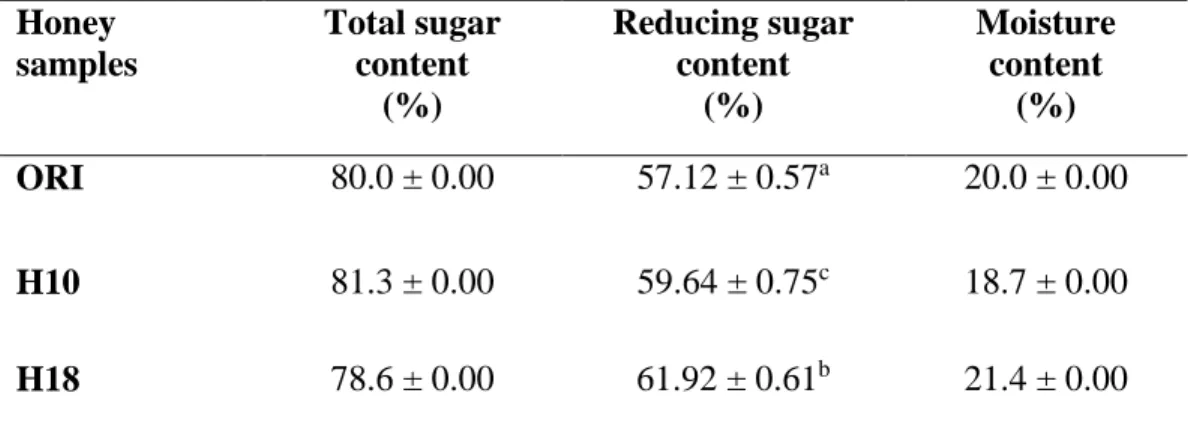Honey in Malaysia 5
Ginger
Ginger in Malaysia 9
Those pigments and phenolic compounds contribute to the antioxidant properties of honey (Al-Farsi et al., 2018). At the same time, the water activity of honey also correlated linearly with moisture content (Zamora et al., 2006). In addition, the moisture content of honey also depends on honey harvesting and storage management (Olaitan et al., 2007).
22 organic acids such as gluconic acid, resulting in the low pH value of honey (Abselami et al., 2018). The color intensity of honey samples was measured using the method of Beretta et al. The water activity of honey samples was measured using the Novasina Lab Swift portable water activity meter.
The electrical conductivity of honey samples was measured using OAKTON Multi-Parameter PCSTestrTM 35 (International Honey Commission, 2009). The reducing sugar content of honey samples was measured with 3,5 dinitrosalicylic acid (DNSA) (Moniruzzaman et al., 2013). For adhesion, ORI honey showed the highest percentage at 70.0%, the H18 honey showed the second highest percentage at 57.5%, and the H10 honey showed the lowest percentage at 55.0.
However, the addition of ginger had no significant effect on the antibacterial activity of honey.

Sensory Properties 11
Physicochemical Properties
Colour Intensity 15
The color of bee honey normally ranges from light yellow to amber and dark amber. The color intensity of honey is revealed by ABS450, where the absorbance of honey is measured at 450 and 720 nm, while the color intensity is represented by the net absorbance in the unit mAU (Moniruzzaman et al., 2013).
Acidity 15
The fermentation of sugars also correlated with two other important parameters of honey, namely taste and stability against microbial spoilage (Bogdanov et al., 2008). The alcohol will then further oxidize to acetic acid, creating a sour taste (Khalil et al., 2012).
Water Activity 16
In general, many factors affect the water activity in honey, including the type of honey, the physical condition of honey, filtration of honey, and storage condition (Yap et al., 2019). The dehydration process can reduce the water activity of honey to a safe level that prohibits microbial growth.
Electrical Conductivity 17
Storing honey in a low humidity environment also reduces its water activity. Moreover, the heating process also reduces the water activity of honey and water activity affects the honey crystallization, whereby the low water activity in honey accelerates its crystallization (Wilczyńska and Ruszkowska, 2014).
Total Sugar Content 18
19 the honey with a high total sugar content is more viscous than the honey with a low total sugar content (Kamal and Klein, 2011). Honey with a high total sugar content is normally associated with high osmotic pressure and low moisture content.
Reducing Sugar Content 19
In other words, honey with a high total sugar content has a longer shelf life than honey with a low sugar content. In addition, total sugar content can affect the taste of honey, as honey with a high total sugar content has a sweeter taste (Moniruzzaman et al., 2013).
Moisture Content 20
A honey solution with a concentration of 0.13 g/mL was prepared by adding 10 g of honey sample to 75 mL of distilled water. All the diluted honey samples with a concentration of 0.2 g/mL were prepared by putting 1 g of honey sample in 5 mL of distilled water. The honey samples were diluted to 0.2 g/mL by adding 1 g of honey sample to 5 mL of distilled water, and the ginger honey samples were filtered with 0.45 µm nylon.
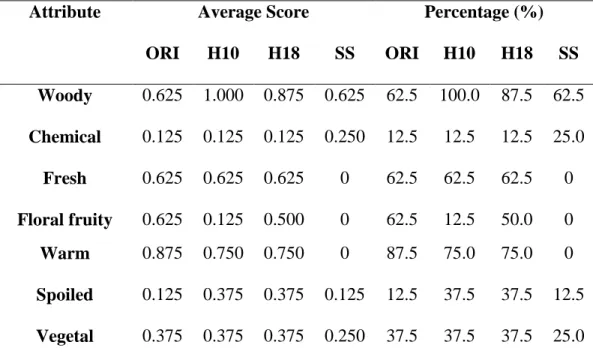
Antibacterial Properties
Antibacterial Effect of Ginger 22
Antibacterial Assays 23
Antioxidant Effect of Honey 25
Antioxidant Effect of Ginger 26
Antioxidant Assays 28
29 The antioxidant activity can be detected by measuring the intensity of the yellow color formed using a spectrophotometer at 532 nm (Zhou et al., 2012). Moreover, the antioxidant activities possessed by honey can be evaluated by its superoxide anion scavenging activity. Additionally, the antioxidant properties of honey can be tested from its ability to chelate transition metal ions.
The formation of ferrozine-ferrocomplexes can be disrupted by antioxidants in honey, leading to discoloration of the red magenta complex (Yusof et al., 2013). This decrease in color intensity can be measured using a spectrophotometer at wavelength 562 nm (Chai et al., 2014). All honey samples were sealed tightly in a glass bottle and kept dark at room temperature to avoid crystallization and direct sunlight so that the quality of the honey can be maintained (Fasasi, 2012).
Bacterial Samples 31
Chemicals and Media 31
Equipment and Labware 31
Methodology
- Reagent Preparations 32
- Sensory Properties 32
- Colour Intensity 34
- Acidity 34
- Water Activity 35
- Electrical Conductivity 35
- Total Sugar Content 35
- Reducing Sugar Content 36
- Moisture Content 37
- Antibacterial Properties 37
- Total Phenolic Content 38
- Hydroxyl Radical Scavenging Activity 39
- Superoxide Anion Scavenging Activity 40
- Iron Chelating Activity 41
- Statistical Analysis 42
- Taste Evaluation 45
- Visual, Texture and Acceptability Evaluation 47
A honey solution with a concentration of 50% (w/v) was prepared by dissolving 1 g of honey sample in 2 mL of warm distilled water. The moisture content of the honey samples was determined by its refractive index, so an Atago® pocket refractometer was used to directly measure the moisture content of the honey. The total phenolic content of the honey samples was calculated using the formula below and the final value was expressed as milligrams of gallic acid equivalent (GAE) per kilogram of honey.
The deoxyribose degradation assay proposed by Zhou et al. 2012) was used to test the efficiency of honey samples to scavenge hydroxyl radicals. The superoxide anion scavenging activity of the honey sample was calculated according to the following equation and the values were recorded as percentage inhibition. An aliquot of 0.2 ml of each honey sample was mixed with 0.4 ml of ferrozine solution and 0.2 ml of ferrous sulfate solution.
Physicochemical Properties 49
So only the H18 honey met the international standard of the Codex Alimentarius Commission (2001) that limited the reducing sugar content of honey to more than 60.00. The international honey quality regulation, established by the Codex Alimentarius Commission (2001), limited the moisture content of honey to 20.0% or less. The H18 ginger honey was the only honey tested to exceed the limit with the moisture content of 21.4%, while both ORI base honey and H10 ginger honey were within the limit with the moisture content.
As summarized in Table 4.5, the reducing sugar content of both ginger honey samples was significantly higher than the base honey.
Antibacterial Properties 51
Meanwhile, ORI was among the weakest antibacterial agents, producing only a zone of inhibition with a diameter of 0.90 cm against both E. Overall, the results showed the absence of significant differences between the antibacterial activities of the three honey samples, although both ginger honey samples showed slightly higher inhibitory effects against E.
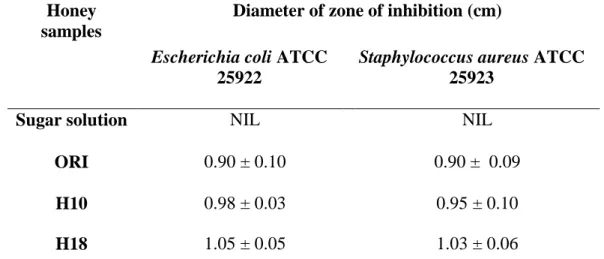
Antioxidant Properties 53
In the same study, the authors pointed out that the addition of 1% and 2% ginger extract in the control honey increased the acceptability of the honey to 65.6% and 85.0%, respectively, which was higher than the ginger honey samples in this study. According to Bogdanov et al. 2008), the acidity of honey depends on sugar fermentation, which forms an organic acid. Water activity is the total free water in honey and is an important factor related to honey quality (Olaitan et al., 2007).
To date, there is very limited literature research on the water activity of honey-ginger mixture. Also, another study by Can et al. 2015) observed a negative correlation between the moisture content of honey and its total sugar content. The antioxidant effect of honey increased with the increasing concentration of ginger added to the honey.
Influence of addition of selected spices on sensory quality and biological activity of honey. Influence of honey on suppression of human low density lipoprotein (LDL) peroxidation (in vitro).
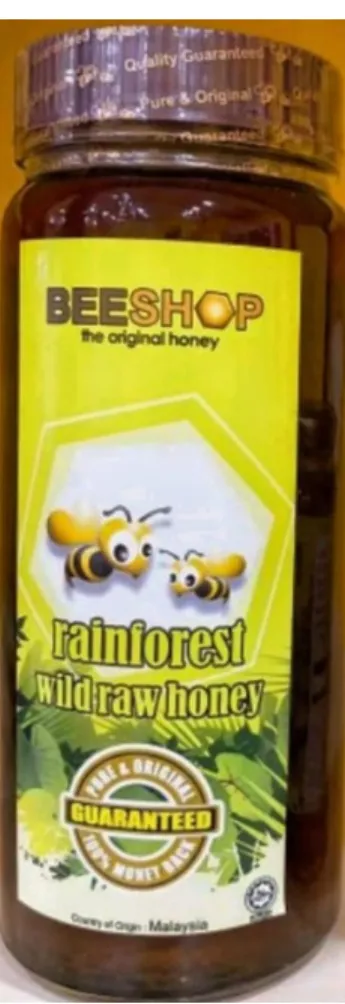
Physicochemical Properties
Acidity 57
Water Activity 58
Electrical Conductivity 59
The electrical conductivity of all honey samples in this study fell between 290.00 µS/cm and 532.30 µS/cm. The mean values obtained were all below the maximum 800.00 µS/cm recommended by Codex Alimentarius Commission (2001), indicating the absence of heavy metals in the honey (Fredes and Montenegro, 2006). The electrical conductivity of the tested ginger honey sample was comparable to the values recorded in the study by Beykaya (2021), in which the electrical conductivity of the honey-ginger mixture was 550.00 µS/cm.
Previous studies have shown that electrical conductivity is closely related to its acidity and mineral content in honey (Yücel and Sultanog, 2013). Electrical conductivity also changed when the amount of pollen in honey decreased (Kaskoniene et al., 2010). Electrical conductivity values for H10 and H18 honeys were significantly higher compared to ORI honey, indicating a higher mineral and acid content in the mixture due to the addition of a rich mineral proportion of ginger to the honey (Omoya and Akharaiyi, 2012). .
Sugar Content 60
Moisture Content 61
Antibacterial Properties 62
The gram-negative bacteria and gram-positive bacteria included in this evaluation were Escherichia coli and Staphylococcus aureus, the most common causative bacteria of bacteremia and healthcare-associated infections (Poolman and Anderson, 2018). 63 As Table 4.6 shows, the sugar solution acting as negative control did not show any inhibitory effect on the test bacteria, while all honey samples succeeded in inhibiting both E. This observation suggested that the antibacterial effect of honey not only depends on the sugar content in the honey but also relies on other bioactive components (Almasaudi, 2021).
The inhibitory potency of all honey samples on the test bacteria was similar with non-significant higher inhibition observed for ginger honey samples. Therefore, it can be said that the addition of ginger had no significant effect on the antibacterial activity of base honey, although it was assumed that the combination of both honey and ginger has an enhanced antibacterial ability because both of them are antimicrobial agents. This scenario can be explained by the probable antagonistic reaction occurring between the phytochemicals of honey and ginger (Aleksandra et al., 2017).
Antioxidant Properties 64
Compared to the reported values ranging from in the study of Nagai et al (2012) with multi-flowered honey, the honey analyzed in this study showed a similar result. The non-significant increase in hydroxyl free radical scavenging activity in ginger honey may be due to the additional antioxidants the ginger provided to the base honey, but the reinforcing effect of ginger was limited by the phytochemicals in honey (Aleksandra et al., 2017) . Superoxide anion is a free radical formed in the mitochondrial electron transport system, leading to the formation of other reactive oxygen species (Lee et al., 2004).
Another study by Nagai et al. 2012) stated that the superoxide anion scavenging activity by multiflower honey varied and was lower than the values obtained in this study. The same trend was also reported in a similar study by Jasna et al. 2014) that examined honey plum products. Despite both honey and ginger showing the ability to chelate metal ions, multifloral honey showed lower iron chelating activity than ginger (Aleksandra et al., 2017).
Future Studies 67
